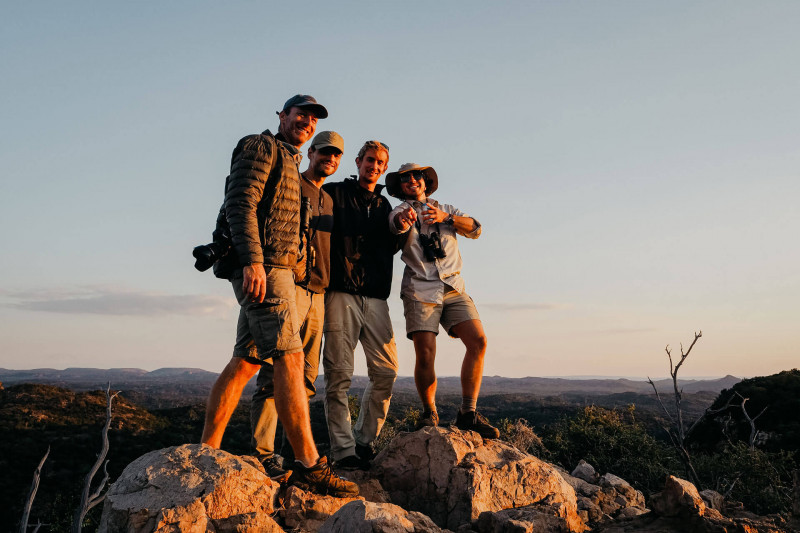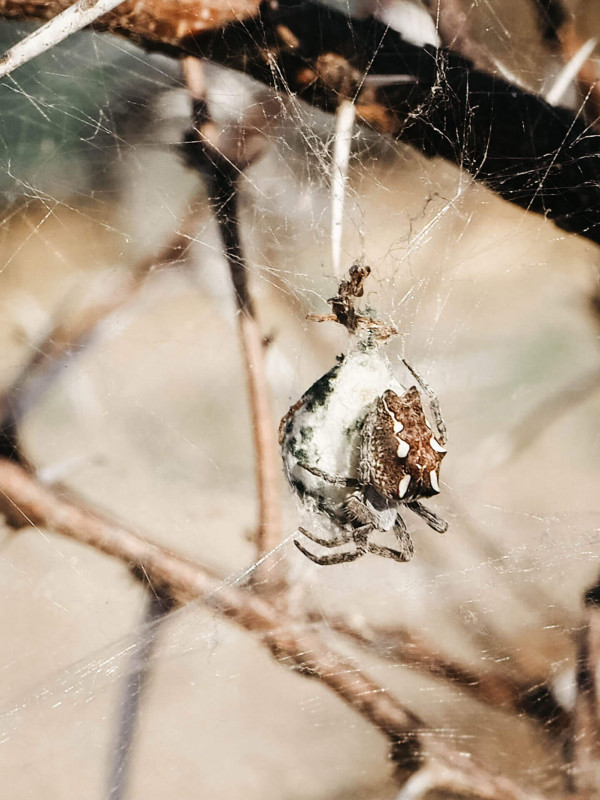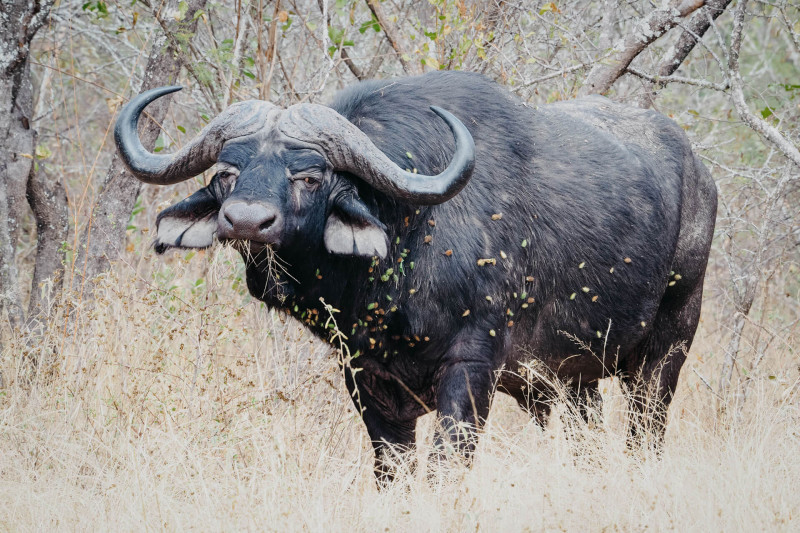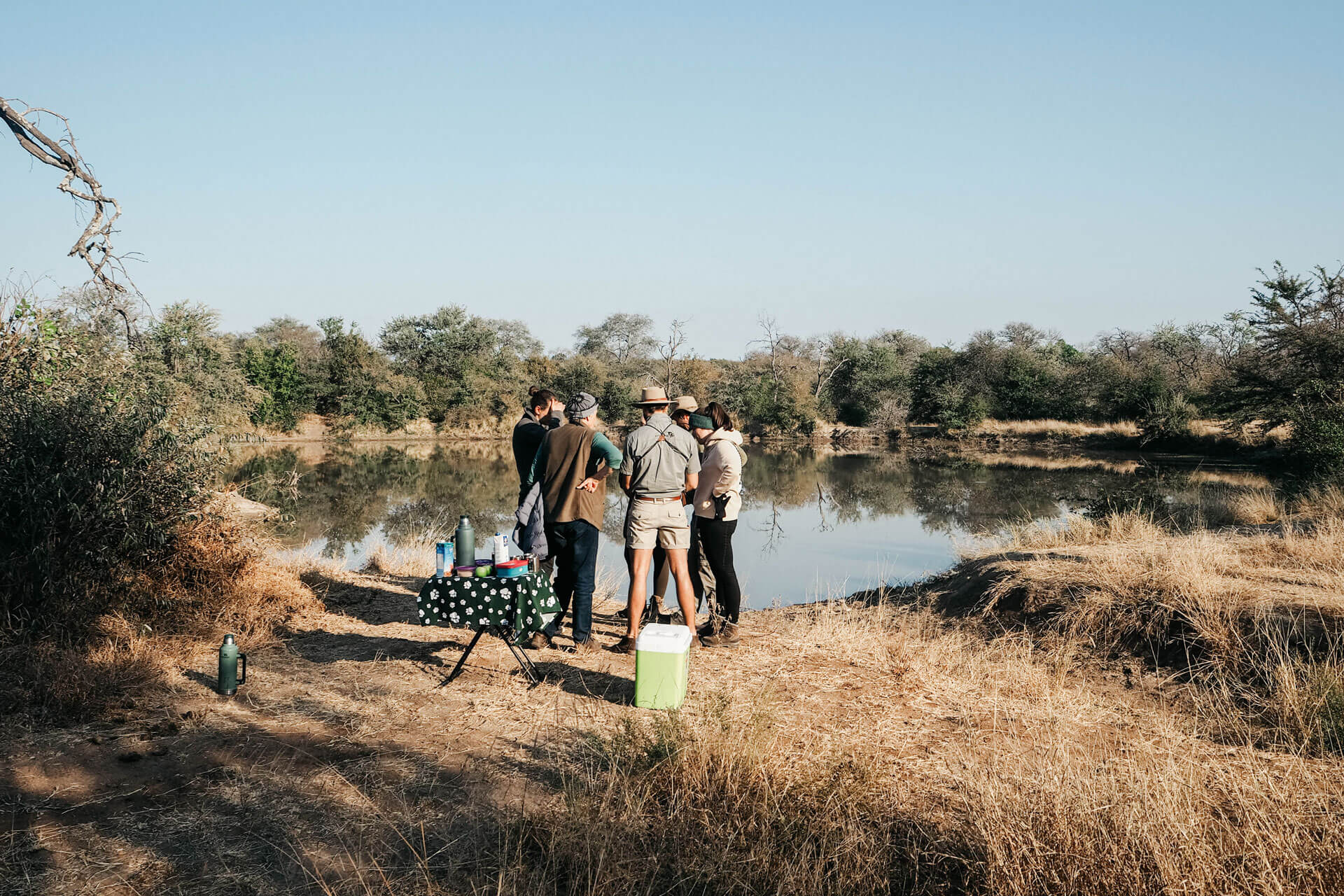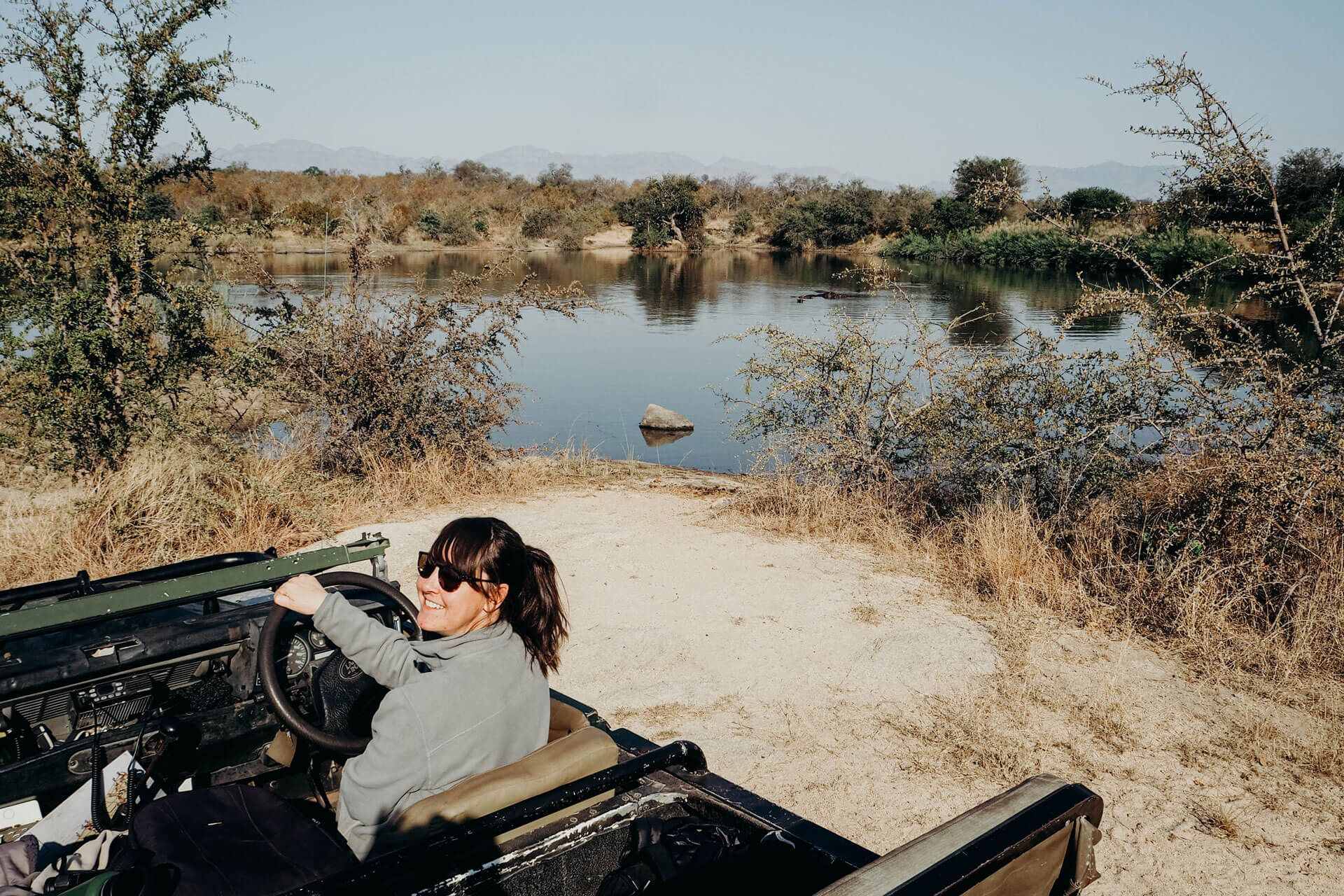It was in March 2020 that we had to leave South Africa almost overnight due to the progressing Coronavirus pandemic. When the country announced the closure of its international borders, we were only halfway through our our 55-days safari guide course and had no idea if and when we might be able to return.*
* You can read all about the first part of my training in these two posts: part 1: Makuleke & part 2: Karongwe
Back in Germany it took me quite a while to settle back into my normal life. Just days ago we were walking through the African bush looking for tracks and listening to the wild sounds that surrounded us. Now all I could hear was the muffled noise of cars passing by while I sat at my kitchen desk trying to work from home. Was this really the final act of my long-planned adventure to become a safari guide?
Finishing what we started
Not yet! Only a few weeks later Ecotraining launched their new e-learning platform which gave us the possibility to complete our missing theory lectures from home. Furthermore, also FGASA (Field Guide Association of South Africa) announced that it was now possible to write the theory exam online. And that’s exactly what I did! After an intense phase of studying, I passed my exam. Now only the practical part of my training was missing.
And finally, a little over a year after I left South Africa in the first place, it was possible to travel again. The number of new COVID-19 infections was constantly declining and so I decided to return to Africa in May 2021 to finish the second half of my safari guide course.
Back in the wilderness
After a year full of COVID-19 related restrictions and lock-downs, I was so happy and grateful to be finally back in the African wilderness with all its big and tiny inhabitants!
Once we arrived in camp, we immediately got to know our fellow students. Since it was just the two of us who returned for the second half of the training, we joined an ongoing course roughly in the middle of their schedule. And we were received with very open arms!
But despite the warm welcome, my first days back in camp felt a bit overwhelming. While the other students seemed to easily identify any bird call played out to them, I struggled with the practical aspects of the training. Everything I had once known about trees, alarm calls or tracks seemed to be buried somewhere deep in my mind.
My knowledge definitely needed refreshment! And so I started digging, and day by day, I slowly managed to bring everything back to the surface: the easy-identifiable “pik tail”-shape of the Red Bushwillow, the catchy “Coffee, tea and me”-call of the Orange Breasted Bushshrike or the typical “B”-form of a porcupine’s foot print. I was back on track! 🙂
And just in time! While our days were filled with practicing game drives, filling out work books, reading tracks, learning bird calls or interpreting animal behavior, our final exams came closer and closer. And with it the sad certainty that our time in the bush would soon come to an end.
Preperation, preperation
With only a few days left until our guiding skills would be assessed in a practical game drive, all the students started to plan and practice their route. Just like in a real working situation, it would be our task as safari guides to create and conduct a 2 to 3 hours long game drive while the assessor and up to 5 other students would play the role of guests.
At this point in time I was very well aware of my strengths and weaknesses and tried to plan the route accordingly. While identifying trees (especially in winter with almost no leaves left on the branches) or analysing rock formations was definitely not my cup of tea, I chose a route through the northern section of the reserve where I hoped to encounter a bunch of mammals. And my test drive went brilliantly! Not only did I encounter buffalos, baboons and rock hyraxes, we also managed to spot a white rhino on my tour. The very first we saw in the reserve in three weeks! Very optimistic about my chosen route, I started to relax a bit. If there were mammals, I would be fine! So much for the plan…
A couple of days before our final drive, we drew lots to determine the order in which all of us would be assessed. In total, the practical tests would last for four days, with two morning and two evening drives each day. And to my surprise (and shock) I was the very first student to be assessed. Was this a good thing? I wasn’t sure. At least I wouldn’t have to wait for days to be tested, which definitely wouldn’t have helped with my nervousness. On the other hand, I didn’t have a chance to observe the drive of another student and learn from it for my own assessment. Either way – the lot decided and I would accept it.
The day before my drive I had to conduct a so-called “pre-briefing” with my guests, in which I would tell them what to expect, what to wear and bring and ask them about their special interests. The last one being quite a tricky question, since it is expected of a guide to incorporate the special interests of your guests into the itinerary. But of course all students that acted as tourists on my drive were briefed by me beforehand, and knew exactly what to say and not say. And to “my surprise” all of them loved mammals and hoped for a lot of encounters 😉 The only element of uncertainty was the assessor. Would he like to learn as much as possible about the reserve’s rocks and soil composition? Luckily for me he didn’t! He was fine with everything we would encounter. And I was very fine with his answer. 😀
The final assessment
The next morning, I woke up very early to check the vehicle and make sure everything was prepared for the drive. Then I headed to the meeting point where I would pick up my guests. With their arrival, my assessment would begin.
I started the drive with the safety briefing and used the map to show my guests and the assessor the route of my tour. To my surprise, I even remembered to use the radio and inform the reserve’s lodges about my intended direction, something I kept forgetting about in the past.
And except for one little hick up when I used the wrong gear and had problems with driving up a hill, the drive started very smoothly. However, there was no animal yet in sight. And so I started to talk about trees and termite mounds we found along the way. Not the most exciting topics, but I needed to “entertain” my guests.
After I stopped for a nice view on the Drakensberg Mountains, we continued to the northern section of the reserve. This is where we found the rhino the last time. But the only mammal we got a short glimpse of was a duiker before it disappeared into the bush quickly (it actually went so fast that I was happy to be able to identify it at all). Still no animals in sight, I continued talking about rhino rubbing posts and alien plants. Where was everyone this morning?
Finally I arrived at the spot where I intended to do my coffee break. Unfortunately not even the water monitor we had encountered here before made an appearance. But luckily there is always poo around! And so I informed my very interested guests about rhino droppings and scrape marks… which in fact is a really interesting topic!
Hopefully I would be more lucky in the second part of my drive. I still had one ace up my sleeve… And so I headed to a huge rock formation, where I knew the hyraxes were always up for a good sun bath… Except, today they weren’t. There was not one little creature around, and by this time, I was wondering if there might be a more important meeting taking place which required the attendance of the entire animal kingdom? Maybe the next lion king was about to be announced while I was driving around talking about poo and termite mounds… If only I knew where it was! 😉
After about 3 hours I headed back to camp. I didn’t manage to find any mammals, but I managed to pass my exam. And isn’t this what we learned all along in our course? Nature is diverse and there is so much more to see and learn about than just the Big Five most tourists hope to see on a safari. Every creature, no matter how small, plays its role and forms and essential part in nature’s complex web of life. I truly believe that if we see and understand how everything is connected with each other, including us, will we respect and protect nature’s masterpiece of life.
Farewell – for now
By the end of the week, all students had passed their exam. We were thrilled, but at the same time, very sad about the approaching end of our course. Everyone tried to enjoy the remaining hours in the bush as best as they could and soak up the last moments of true wilderness before we would part ways and head home again.
As always, saying goodbye was difficult. But I knew for sure that this wouldn’t be the last time for me to experience the African wilderness. As they say, once the African travel bug catches you, it will stick with you for a lifetime. And this is very true for myself. There is still so much more to learn and explore.
Until next time! Farewell my dearly Africa!


